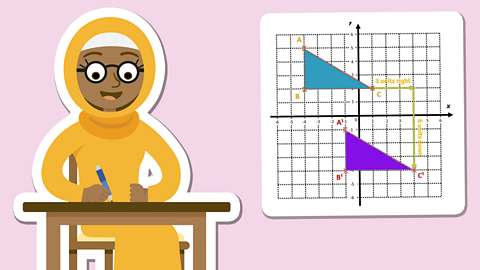What is a co-ordinate?
It is possible to position a point on a grid using a pair of numbers or co-ordinates.
A pair of co-ordinates is an example of an ordered pair since it is important which way around we write the two numbers!
Which number gets written first and which number gets written second – it matters.
So, for example, a point with the co-ordinates (2,3) is a different place to a point with the co-ordinates (3,2).
The grid below shows a pair of axes, dividing a grid into four parts, or quadrants.
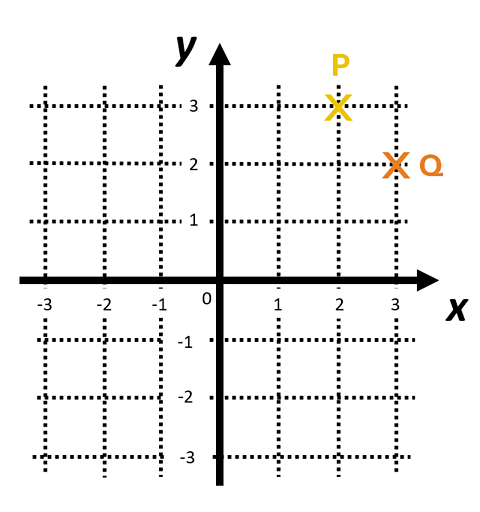
What are quadrants?
The x axis is the horizontal axis. In this example the x axis is numbered from -3 to 3.
The y axis is the vertical axis. In this example the y axis is also numbered from -3 to 3.
The two axes intersect at right angles at the point we call the origin – or the place that we start from when we look to position a point with a given co-ordinate.
The letter P positions a point with co-ordinates (2, 3). This point is located in the first quadrant.
The letter Q positions a point with co-ordinates (3, 2). This point is also located in the first quadrant.

The four quadrants are labelled as shown – the First Quadrant, the Second Quadrant, the Third Quadrant and finally the Fourth Quadrant.
Only in the first quadrant will both the x and y co-ordinates be positive.
Negative co-ordinates will be introduced to positive points in the other three co-ordinates.
Example 1
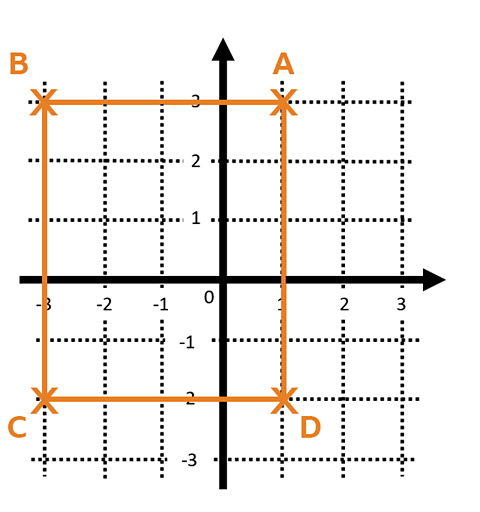
The point A is positioned in the first quadrant.
The co-ordinates of A are (1,3)
We can just write this as A(1,3)
The point B is positioned in the second quadrant.
The co-ordinates of B are (-3,3)
We can just write this as B(-3,3)
The point C is positioned in the third quadrant.
The co-ordinates of C are (-3,-2)
We can just write this as C(-3,-2)
The point D is positioned in the fourth quadrant.
The co-ordinates of D are (1,-2)
We can just write this as D(1,-2)
The four points could be joined, A to B, B to C, C to D and finally D to A to form therectangle ABCD.
Example 2
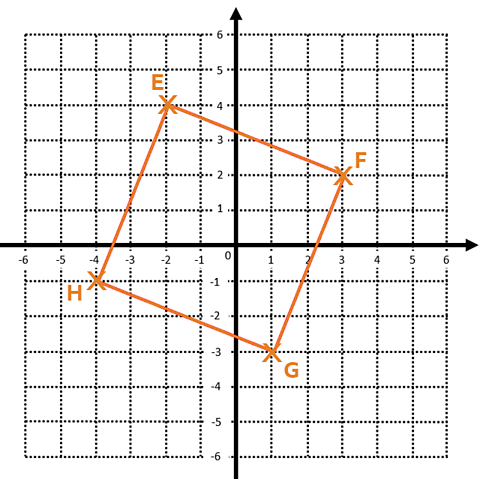
The diagram above shows a square EFGH.
The point E is positioned in the second quadrant.
The co-ordinates of E are (-2,4)
We can just write this as E(-2,4)
The point F is positioned in the first quadrant.
The co-ordinates of F are (3,2)
We can just write this as F(3,2)
The point G is positioned in the fourth quadrant.
The co-ordinates of G are (1,-3)
We can just write this as G(1,-3)
The point H is positioned in the third quadrant.
The co-ordinates of H are (-4,-1)
We can just write this as H(-4,-1)
Example 3
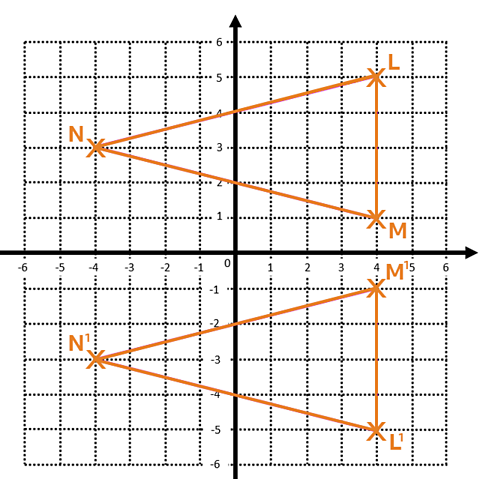
The diagram above shows an isosceles triangle, LMN.
The co-ordinates of the vertices of the triangle are:L(4,5), M(4,1) and N(-4,3).
If the triangle is reflected in the x axis then the co-ordinates of the reflected image would be LÂą(4,-5), MÂą(4,-1) and ±·Âą(-4,-3).
So, when reflected in the x axis, we have:
L (4,5) → L¹ (4,-5)
M (4,1) → M¹ (4,-1)
N (-4,3) → N¹ (-4,-3)
Look at what happens to the x and y co-ordinates when points are reflected in the x axis.
The x co-ordinate stays the same, whereas the y co-ordinate 'changes sign’, i.e. if it was positive it now becomes negative and if it was negative it changes to positive!
We could generalise and say:
A (x,y) → A¹ (x, -y)
Activity
Quiz
NEW! Play Guardians: Defenders of Mathematica - the Halloween update. gameNEW! Play Guardians: Defenders of Mathematica - the Halloween update
Experience Mathematica as you’ve never seen it before, with all-new backgrounds and costumes for Halloween. Available for a limited time only. Use your maths skills to save the day before it's too late!

More on Coordinates
Find out more by working through a topic
- count1 of 3
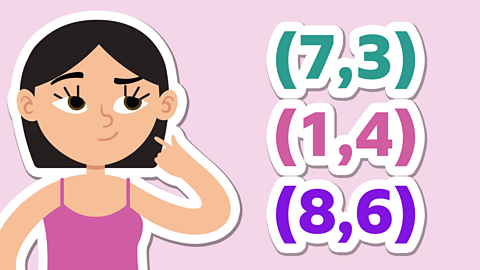
- count2 of 3
